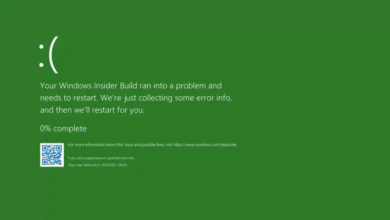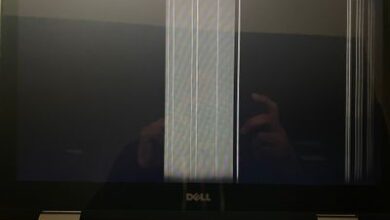
Welcome to the world of broken chromebook screen, where sleek design meets effortless functionality. These lightweight and affordable laptops have taken. The tech market by storm with their seamless integration of Google’s powerful operating system. Whether you’re a student, professional, or just someone who appreciates simplicity and reliability. Cances are you’ve fallen in love with your Chromebook.
But alas, accidents happen! One fateful drop or a clumsy mishap can leave you staring at a shattered screen on your beloved device. Don’t panic just yet though! In this blog post, we’ll guide you through the ins and outs of repairing your broken Chromebook screen. So that you can bring it back to its former glory.
So grab your toolkit (metaphorically speaking) and let’s dive into the world of DIY repairs versus professional assistance. Step-by-step guides for replacing your screen yourself. Best practices for maintaining a pristine display, as well as warranty and insurance options to protect against future mishaps. Stay tuned because no matter how dire things may seem right now. We promise that there is hope for reviving your broken Chromebook screen!
Common Causes Of Broken Chromebook Screen
One common cause is accidental drops or impacts, which can result in cracks or shattered screens. Whether it’s a slip from your hands or an unfortunate collision with a hard surface, accidents happen and screens pay the price.
Pressure applied to the screen serves as another potential culprit. This pressure often results from stacking items on top of the closed laptop, which causes undue strain. Even an action as innocent as placing heavy books in your backpack with your Chromebook can result in screen damage over time. For instance, when you place your laptop at the bottom of your backpack and then pile up heavy books on top of it, it causes excessive pressure. Over time, this pressure wears down the screen, eventually leading to possible cracks or other types of damage.
Additionally, manufacturing defects may also contribute to broken screens. While Chromebooks are generally reliable devices, there have been instances where faulty components or poor construction have led to screen issues.
It’s important to note that proper care and handling can help mitigate these risks. Avoiding rough handling, using protective cases, and being mindful of how you store and transport your Chromebook can go a long way in preventing screen damage.
In conclusion, accidents such as drops and impacts often cause damaged screens on Chromebooks. Additionally, applying pressure to the screen by stacking objects on top of it can also result in damage. Not to mention, there may be some devices that suffer from manufacturing defects which could contribute to screen damage.
However,taking precautions and practicing good maintenance habits should help prolong the life of your Chromebook’s screen
DIY Repair Vs Professional Repair Of Broken Chromebook Screen
When it comes to repairing a broken Chromebook screen, you have two options: tackling the repair yourself or seeking professional help. Both approaches have their pros and cons, so let’s explore them further.
DIY Repair
One of the main advantages of DIY repair is cost-effectiveness. If you’re confident in your technical skills and have some experience with electronics, fixing your Chromebook screen on your own can save you money. There are numerous online tutorials and guides available that provide step-by-step instructions for replacing a broken screen.
Another benefit of DIY repair is convenience. You can work on your own schedule without having to wait for an appointment at a repair shop or deal with shipping times if sending it off for repairs. However, there are also downsides to consider. Performing a DIY repair requires technical know-how and delicate handling of electronic components.
Furthermore, attempting DIY repairs may void any existing warranties or insurance coverage you have on your Chromebook. It’s important to weigh these factors before deciding whether or not to go the DIY route.
Professional Repair
Opting for professional repair ensures that trained technicians will handle the job using specialized tools and equipment. They possess the expertise needed to diagnose issues accurately and carry out repairs effectively. By choosing professional assistance, you eliminate the risk of accidentally damaging other parts while trying to fix the screen yourself – something that could end up costing more in the long run.
Additionally, many reputable repair shops offer warranty-backed services guaranteeing their workmanship for added peace of mind. The text is as follows: “On the negative side, hiring professionals for repairs can cost you more than opting for the DIY route because of the labor costs involved. The cost can fluctuate based on your location and the availability of reputable service centers in your vicinity.
Also, the turnaround time might extend if these centers are not readily accessible compared to if you fix the issue yourself at home. The decision between DIY repair and professional repair depends on your level of technical
Step-By-Step Guide For DIY Screen Replacement
So, you’ve found yourself with a broken Chromebook screen. Don’t worry, because with a little bit of patience and the right tools, you can replace it yourself and save some money in the process! Before you begin, make sure to gather all the necessary supplies: a replacement screen specific to your Chromebook model, a small screwdriver kit (including both Phillips and flathead), tweezers or pry tool, and an anti-static wristband if available.
First things first – power off your Chromebook and unplug it from any power sources. Then carefully remove the screws from around the bezel using your screwdriver. It’s important to keep track of where each screw goes as they may vary in size.
Once all screws are removed, gently pry off the bezel using either tweezers or a pry tool. Take your time here to avoid causing any further damage. Once the bezel is removed, disconnect any cables connecting the old screen to the motherboard.
Next comes removing the broken screen itself. Again using caution, unscrew any brackets securing it in place before carefully lifting it out of its frame. Take note of how everything is connected so that you can easily replicate these steps when installing the new screen.
Now comes installing your shiny new replacement screen! Begin by placing it into position within the frame and secure it with screws if necessary. Reconnect any cables that were disconnected earlier ensuring they are securely attached.
Carefully reattach the bezel back onto your Chromebook making sure not to overtighten any screws as this could cause damage. Give everything one last check before powering on your device again – fingers crossed!
Remember that performing a DIY repair does come with some risks such as voiding warranties or accidentally damaging other components if done incorrectly. If at any point during this process you feel unsure or uncomfortable tackling this on your own, it’s always best to seek professional help.
Best Practices For Maintaining A Chromebook Screen
When it comes to maintaining a Chromebook screen, there are a few best practices that can help prevent any damage or issues. Always make sure to clean the screen regularly using a soft cloth and gentle cleaning solution. This will help remove any fingerprints, smudges, or dust that may accumulate over time.
Another important practice is to avoid placing heavy objects on top of the Chromebook or pressing down too hard on the screen. Excessive pressure can cause cracks or other damage to the delicate display. It’s also recommended to use a protective case or sleeve when transporting your Chromebook. This will provide an extra layer of protection against accidental bumps or drops.
In addition, try not to expose your Chromebook screen to extreme temperatures as this can potentially affect its performance and longevity. Avoid leaving it in direct sunlight for extended periods of time or exposing it to extremely cold environments.
Be mindful when opening and closing the lid of your Chromebook. Use both hands and gently lift or lower the lid without applying unnecessary force. By following these best practices for maintaining your Chromebook screen, you can help prolong its lifespan and minimize the risk of encountering any issues with broken screens in the future!
Warranty And Insurance Options For Chromebooks
Warranty and insurance options for Chromebooks can provide peace of mind and financial protection in case of a broken screen or other damages. Many manufacturers offer a standard warranty that covers defects in materials or workmanship for a certain period, typically one year. This means that if your Chromebook’s screen breaks due to a manufacturing defect within the warranty period, you may be able to get it repaired or replaced at no additional cost.
In addition to the standard warranty, some manufacturers also offer extended warranties that can provide coverage beyond the initial one-year period. These extended warranties often come with additional benefits such as faster repair turnaround times or even accidental damage coverage. It’s worth considering whether an extended warranty is worth the extra cost based on your usage patterns and risk tolerance.
Another option to protect your Chromebook is through insurance plans specifically designed for electronic devices. These plans usually cover accidental damage, including broken screens caused by drops or spills. Insurance plans can be purchased directly from the manufacturer, third-party providers, or even through your homeowner’s insurance policy.
Before purchasing any warranty or insurance plan, it’s important to carefully read and understand the terms and conditions. Pay attention to what is covered (and what isn’t), any deductibles you may have to pay when filing a claim, and whether there are any restrictions on where repairs can be done.
Deciding whether to invest in an extended warranty or insurance plan comes down to weighing the potential costs of repairs against the upfront cost of coverage. Consider factors such as your budget, how likely accidents are in your day-to-day use of the device, and whether you have access to alternative solutions like professional repair services.
Remember that while having a good warranty or insurance plan can offer valuable protection for your Chromebook’s screen, taking preventive measures like using a protective case and handling your device with care can help minimize the risk of accidents happening in the first place.
Conclusion
In today’s fast-paced and technology-driven world, our devices have become an integral part of our lives. And when it comes to convenience, functionality, and affordability, Chromebooks are hard to beat. But what happens when these beloved devices suffer from a broken screen?
While a broken screen may seem like the end of the road for your Chromebook, fear not! There are options available that can help you get back on track without breaking the bank.
DIY repair is a viable option for those who are tech-savvy and willing to take matters into their own hands. With some careful research and guidance, you can learn how to replace your broken screen step-by-step. Not only will this save you money in professional repair costs but also give you the satisfaction of fixing it yourself!
However, it’s important to weigh the pros and cons before embarking on a DIY repair journey. While handling delicate electronics may be cost-effective, it always involves a risk. If you feel unsure or uncomfortable doing the DIY repairs, we always recommend that you seek professional assistance.
When it comes to maintaining your Chromebook screen in tip-top shape, prevention is key. By following best practices such as keeping your device in protective cases or sleeves when not in use and avoiding placing heavy objects on top of it, you can minimize the chances of accidents happening.
It’s also worth considering warranty and insurance options for added protection against unexpected mishaps like a broken screen. Many manufacturers offer extended warranties or insurance plans specifically tailored for Chromebooks that cover accidental damage.
Having a broken screen doesn’t have to mean bidding farewell to your trusty Chromebook forever. With the right knowledge and resources at hand, repairing or replacing its damaged display can give new life to your device without draining your wallet. So don’t let that broken screen dampen your spirits.




